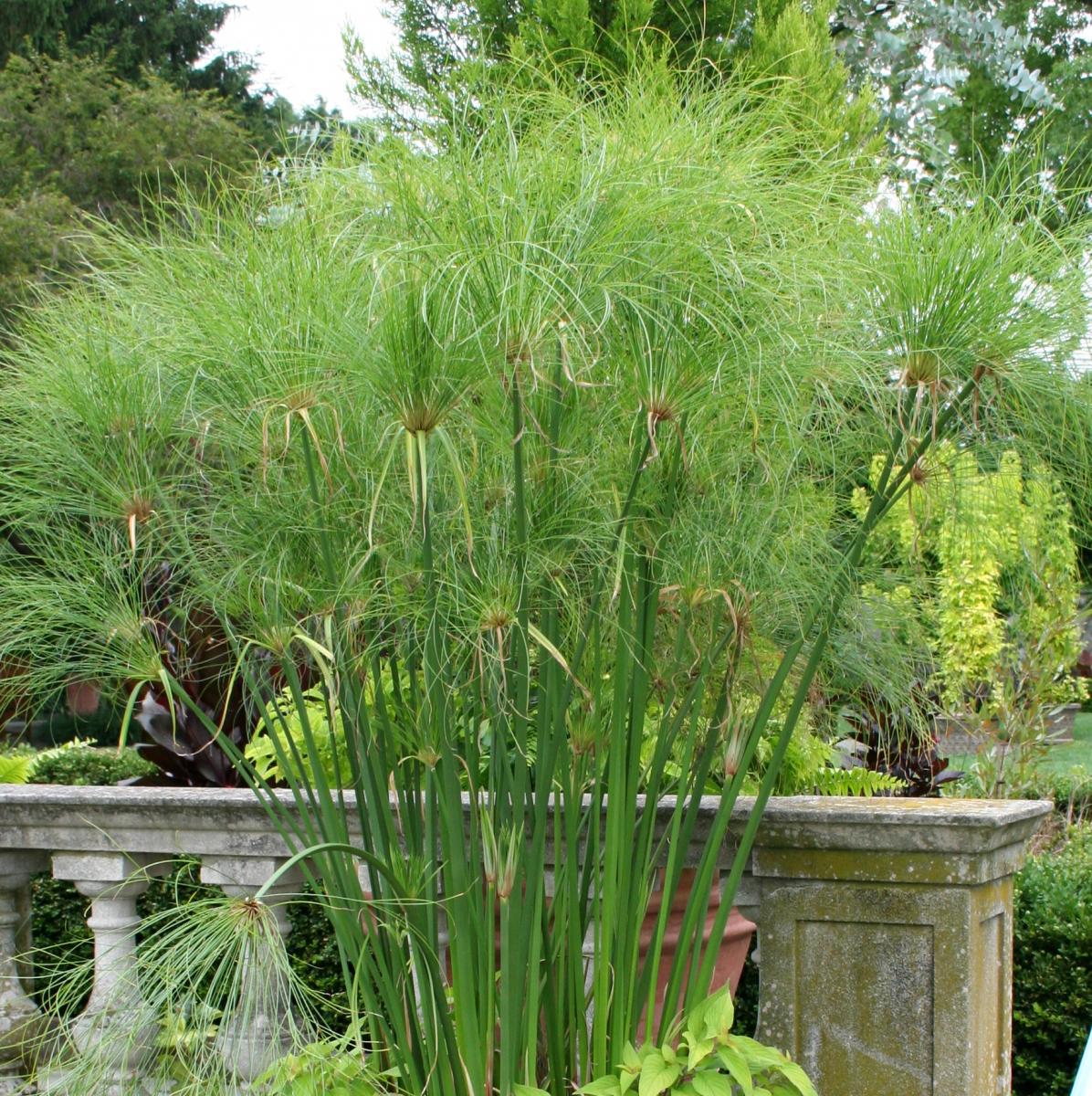

The most likely survival strategy of Papyrus is to keep it at temperatures between 60F and 65F (16-18C).
Overwintering king tut papyrus full#
Dwarf papyrus thrives in both full and partial sunlight. It will thrive in most soils and tolerate poor soil conditions (heavy, wet, pond edges, and so on). Dividing plants wounds them to some degree. In the fall, the best time to overwinter King Tut papyrus grass is indoors. In areas where winter temperatures remain above 35 degrees it should be considered a perennial and the following information should be useful.Įvergreen or neutral grasses are usually plants that look like grasses but aren't actually classified as grasses, they are generally called grass-like plants.ĭivide evergreen or neutral grasses and grass-like plants in spring only.Įvergreen grasses don't ever go dormant. Cyperus Papyrus is not hardy enough to survive winters with freezing temperatures and it is not a candidate to overwinter inside. Large heads of pendulous leaves greenish flower spikelets can measure 1 across. It should not be expected to live through the winter and begin growing again in the spring. Graceful Grasses® King Tut® Egyptian Papyrus Cyperus papyrus. Once the grass turns brown it can either be removed immediately or removed in the spring. Where temperatures get colder than 35 degrees F, the plants should be treated as annuals. King Tut is an evergreen or neutral grass. It is best to keep the soil moist, but once established King Tut has proven to be surprisingly tolerant of dry conditions. Foliage interest, Heat tolerant, Deadheading not necessary, Bog plant, Water Plant. King Tut will also do well when planted in normal garden beds. With shorter stems than King tut, Prince Tut us quite sturdy and less likely to have stems flop. If the plant is put into a pot I would suggest plugging the hole or holes in the bottom of the pot to keep as much water as possible in the pot. Tutankhamun (/ t u t n k m u n / TOO-tn-kah-MOON), Tutankhamon or Tutankhamen (/ t u t n k m n,-m n / TOO-tn-KAH-mn, -men c. The root ball can be submerged but it isn't necessary. The purpose is to keep the bulk of the soil or root mass wet. The crown of the plant should never be covered in water and in fact both of these varieties can thrive in water as shallow as a few inches. The plant can be planted in pots, along the waters edge of a pond, or even in a pond.

It is a very fast grower and will quickly grow to impressive size when replanted in the spring.


 0 kommentar(er)
0 kommentar(er)
